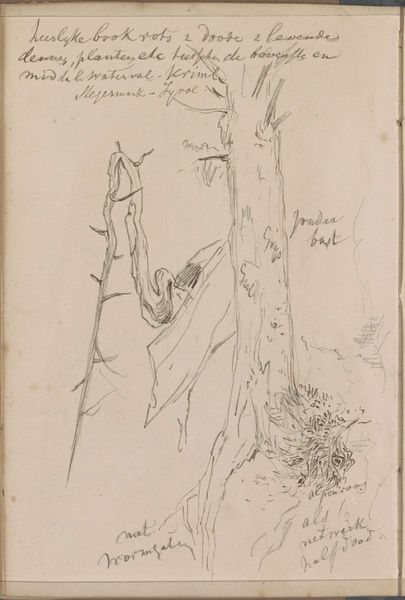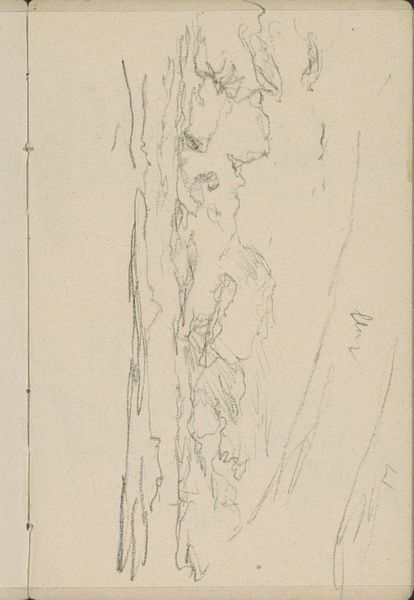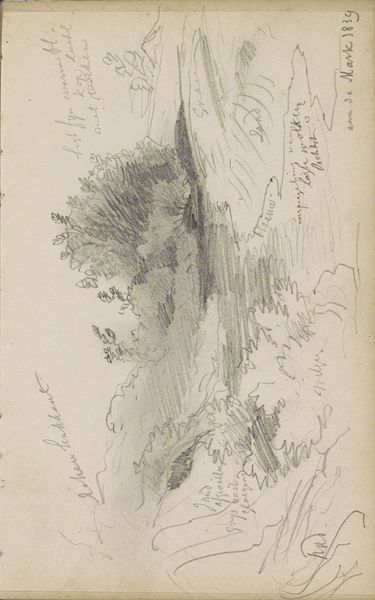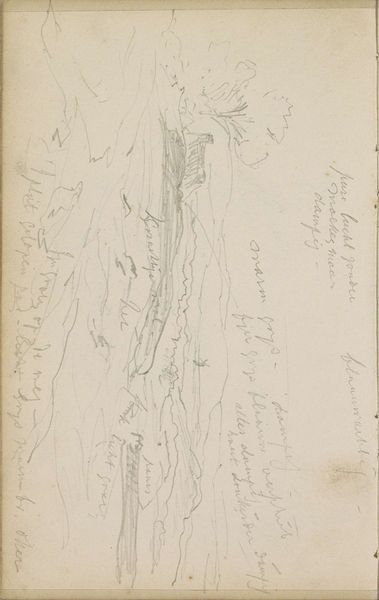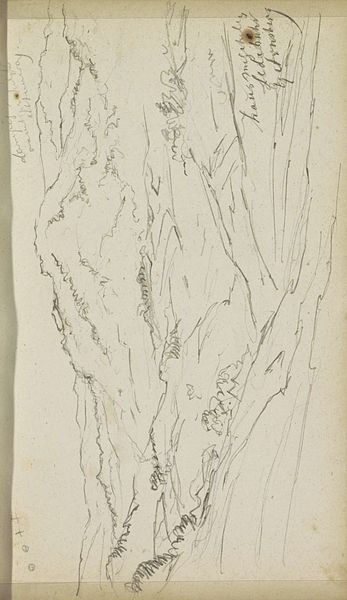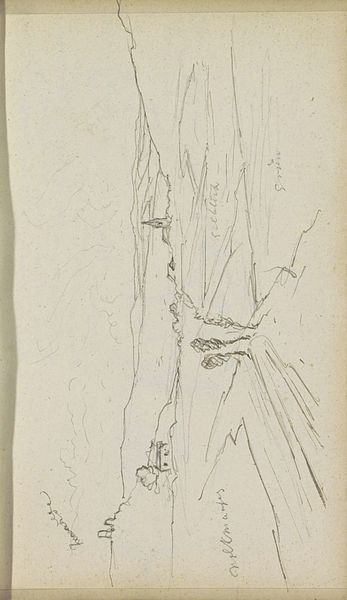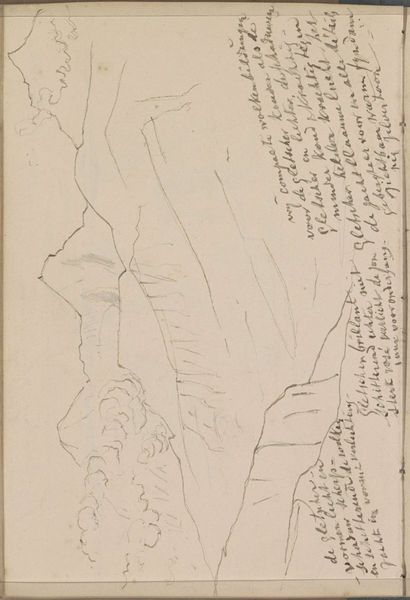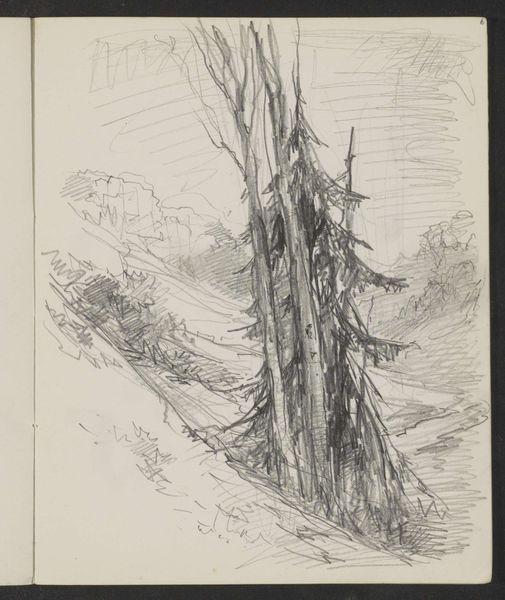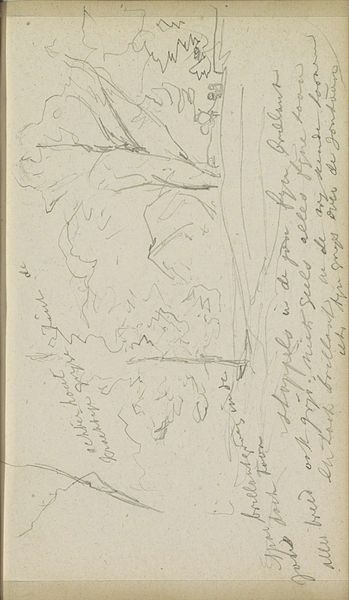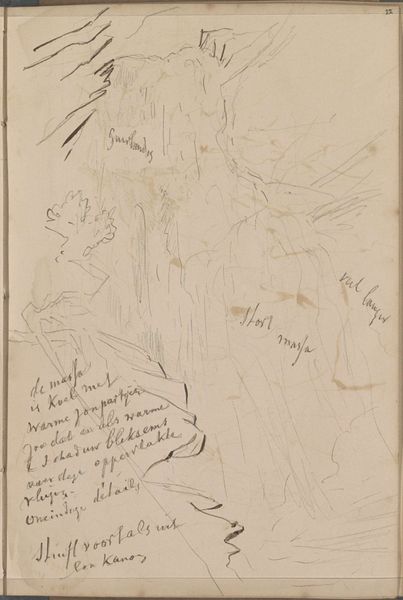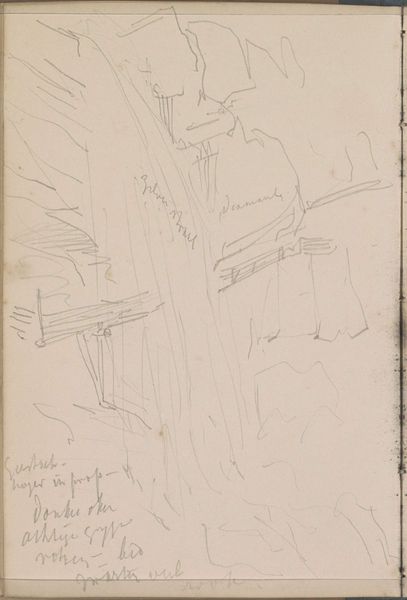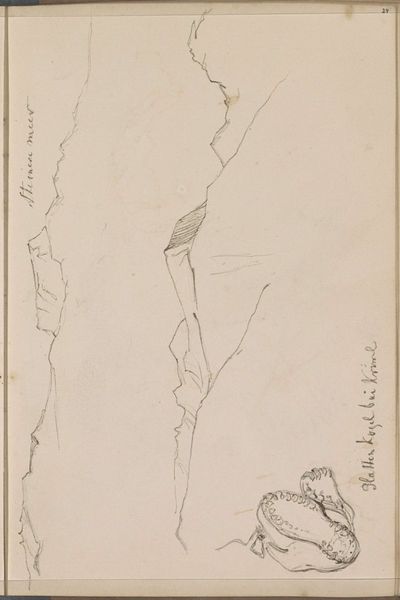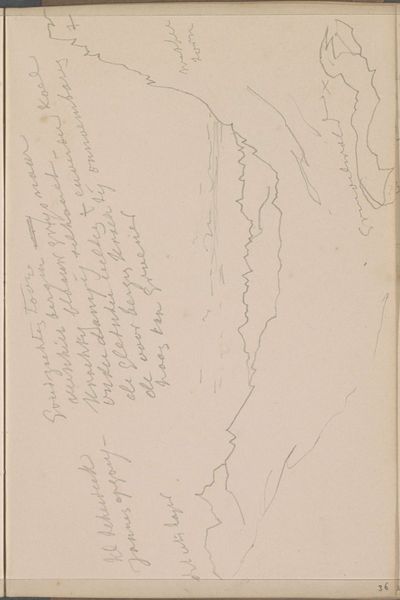
Copyright: Rijks Museum: Open Domain
Editor: Here we have Johannes Tavenraat’s “Waterval,” potentially from 1858-1859, rendered in pencil and ink. The landscape is gestural, almost fleeting. What symbols or meanings do you see at play here? Curator: A waterfall, particularly in Romantic art, carries tremendous symbolic weight. Consider water itself - often representing the unconscious, the source of life, and a space of constant flux. A waterfall, then, becomes a visual metaphor for the power and sublimity of nature, but also for time's relentless flow, doesn't it? It suggests transformation and erosion simultaneously. Editor: So the image isn't just a scene but a representation of deeper, maybe even opposing, forces? Curator: Precisely. Notice how Tavenraat has sketched fleeting gestures rather than meticulous details. This can echo the artist's own internal state and connection to the subject matter. Is he suggesting a longing for, or perhaps a fear of, nature's power? The surrounding barely-there vegetation can signify vulnerability, our fragile connection to the natural world. Editor: It’s amazing how much information can be communicated through a seemingly simple drawing. I hadn’t thought about the implications of the “unfinished” quality. Curator: Indeed. And what we may deem “unfinished” could instead be interpreted as deeply personal and perhaps even revelatory to Tavenraat's intimate perception. Thank you for opening my eyes as well!
Comments
No comments
Be the first to comment and join the conversation on the ultimate creative platform.
